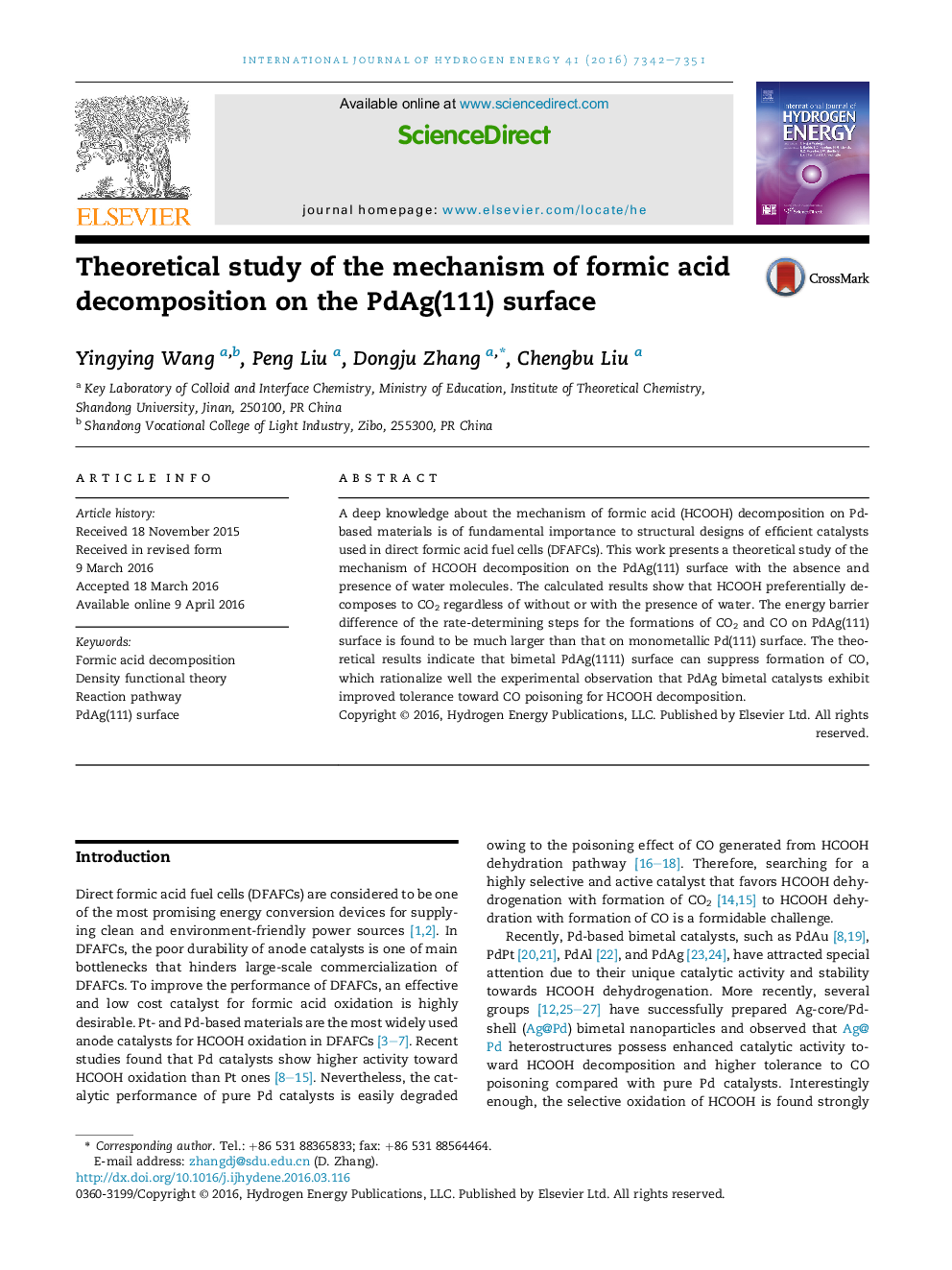| کد مقاله | کد نشریه | سال انتشار | مقاله انگلیسی | نسخه تمام متن |
|---|---|---|---|---|
| 1268686 | 1497407 | 2016 | 10 صفحه PDF | دانلود رایگان |
• The possible pathways of HCOOH decomposition on PdAg(111) surfaces are investigated.
• HCOOH preferentially decomposes to CO2 regardless of without or with the presence of water.
• PdAg catalysts show high catalytic activity and tolerance to CO poisoning toward HCOOH decomposition.
A deep knowledge about the mechanism of formic acid (HCOOH) decomposition on Pd-based materials is of fundamental importance to structural designs of efficient catalysts used in direct formic acid fuel cells (DFAFCs). This work presents a theoretical study of the mechanism of HCOOH decomposition on the PdAg(111) surface with the absence and presence of water molecules. The calculated results show that HCOOH preferentially decomposes to CO2 regardless of without or with the presence of water. The energy barrier difference of the rate-determining steps for the formations of CO2 and CO on PdAg(111) surface is found to be much larger than that on monometallic Pd(111) surface. The theoretical results indicate that bimetal PdAg(1111) surface can suppress formation of CO, which rationalize well the experimental observation that PdAg bimetal catalysts exhibit improved tolerance toward CO poisoning for HCOOH decomposition.
Journal: International Journal of Hydrogen Energy - Volume 41, Issue 18, 18 May 2016, Pages 7342–7351
